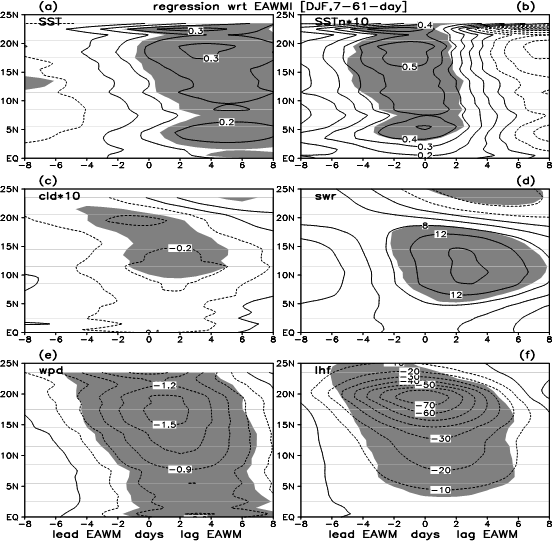
Intraseasonal oscillation (ISO) is an important component of climate variability over the tropical Indo-western Pacific region. The South China Sea is an important path of propagation of ISOs that affect South China and the Indochina Peninsular. Previous studies mainly focused on intraseasonal variability of sea surface temperature (SST) in the South China Sea during boreal summer. Little has been studied on the intraseasonal variability of SST in the South China Sea during boreal winter.
The analysis of Prof. WU Renguang and PhD candidate Ms. CHEN Zhang from the Institute of Atmospheric Physics showed that the South China Sea is one region in northern Tropics where the SST displays the largest intraseaonal variability in winter. They identified two localized regions of large intraseasonal variability of SST during boreal winter in the South China Sea, one extending westward from the Luzon Strait and the other extending southward from the coast of central Vietnam. Correspondingly, large intraseasonal variability in surface heat fluxes is observed in the above regions. The formation of large intraseasonal SST anomalies in these regions is attributed largely to wind-related surface latent heat flux changes, with supplementary contribution from cloud-related surface shortwave radiation changes. Wind-induced Ekman advection has a negative effect and the Ekman upwelling pattern differs from the intraseasonal SST anomaly pattern.

Fig. 1 The 7-61-day intraseasonal anomalies averaged along 107.5°-120°E of a) SST (°C), b) SST tendency multiplied by 10 (0.1°C/day), c) cloud liquid water multiplied by10 (0.1 mm), d) surface net shortwave radiation (Wm-2), e) surface wind speed (m/s), and f) surface latent heat flux (Wm-2) obtained by regression against normalized EAWM index based on all winters during the period 1998-2013. Shading denotes that the corresponding correlation value exceeds 0.3. (Figure plotted by IAP)
Reference: Wu, R., and Z. Chen, 2015: Intraseasonal SST variations in the South China Sea during boreal winter and impacts of the East Asian winter monsoon. J. Geophys. Res., online, 10.1002/2015JD023368.

86-10-68597521 (day)
86-10-68597289 (night)

86-10-68511095 (day)
86-10-68512458 (night)

cas_en@cas.cn

52 Sanlihe Rd., Xicheng District,
Beijing, China (100864)

